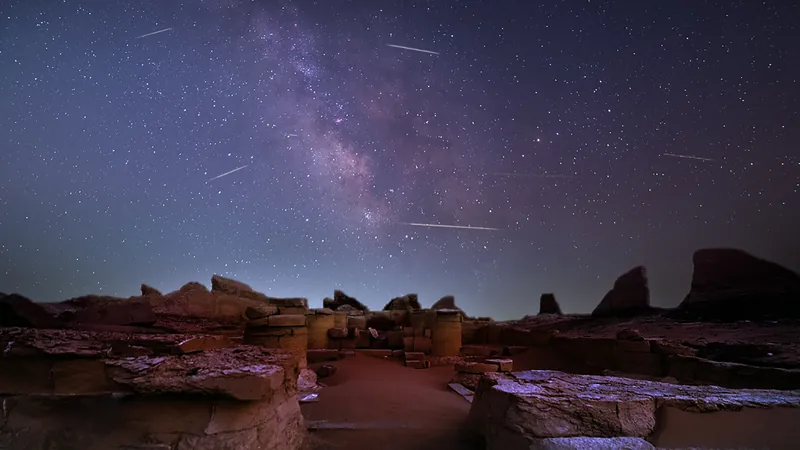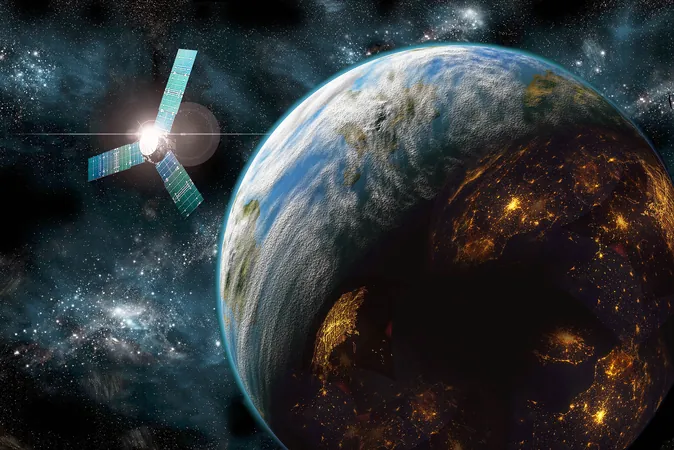
5 Times Early Climate Models Nailed the Future—And You Can See the Proof Today!
2025-09-03
Author: Jacques
Unveiling the Truth Behind Climate Models
Climate models are intricate systems designed to mirror our planet’s dynamic atmosphere and oceans. They harness the power of supercomputers to simulate the chaotic interactions that occur within Earth's systems. While some skeptics, like those in a 2025 report for the Department of Energy, argue these models are too complex to provide credible insights, the history of climate science tells a different tale.
Prophetic Predictions: Climate Model Achievements
Long before we could validate them, early climate models made significant predictions about global warming—and their accuracy is undeniable. The first notable forecasts emerged from the Geophysical Fluid Dynamics Laboratory near Princeton, New Jersey. One pioneer, Syukuro Manabe, played a crucial role in crafting these models; his groundbreaking work earned him a Nobel Prize in Physics in 2021.
Forecast #1: The CO2 Conundrum
In the 1960s, Manabe focused on modeling the greenhouse effect—crucial for demonstrating how greenhouse gases trap heat in our atmosphere. He created a simple yet effective model that suggested doubling CO2 levels would raise global temperatures by approximately 5.4°F (3°C). Fast forward to today: we're halfway to that doubling, and the planet has already warmed by about 2.2°F (1.2°C), aligning well with Manabe’s original predictions.
Forecast #2: Chilling Reality of Stratospheric Cooling
In a surprising twist, Manabe's model indicated that while the Earth’s surface would warm with rising CO2 levels, the stratosphere would cool. This has been confirmed through decades of satellite data and illustrates a distinct impact of carbon-driven warming—unlike other factors, such as solar changes or El Niño effects, which do not produce this signature.
Forecast #3: Arctic Amplification Unraveled
Using his model to explore a broader expanse, Manabe discovered a phenomenon now termed 'Arctic amplification', where the Arctic warms drastically faster than other regions—two to three times more. This has serious implications, including the alarming decline of Arctic sea ice, a clear indicator of climate change.
Forecast #4: The Land-Ocean Temperature Divide
In the early '70s, Manabe advanced his work by collaborating on a groundbreaking ocean model. In the '90s, his coupled atmosphere-ocean model revealed that land warms quicker than oceans—by about 1.5 times—due to distinct thermal properties. This insight is vital, as it means that the repercussions of global warming will be fiercely felt on land.
Forecast #5: The Slow-Warming Southern Ocean
One of the most unexpected findings came from exploring the Southern Ocean. Manabe and his team documented that this region responded sluggishly to CO2 increases due to continuous replenishment of cold deep waters. This delayed warming is now observable in our current climate data.
Connecting the Dots: The Legacy of Manabe’s Models
Reflecting on Manabe's work, it’s evident that even early climate models accurately captured the essence of global warming years before they were observed. While current models have inherent limitations, particularly in predicting regional changes, they provide a critical framework for understanding climate shifts. Thus, as challenges persist, we must not overlook the valuable insights already gleaned from decades of climate science.









 Brasil (PT)
Brasil (PT)
 Canada (EN)
Canada (EN)
 Chile (ES)
Chile (ES)
 Česko (CS)
Česko (CS)
 대한민국 (KO)
대한민국 (KO)
 España (ES)
España (ES)
 France (FR)
France (FR)
 Hong Kong (EN)
Hong Kong (EN)
 Italia (IT)
Italia (IT)
 日本 (JA)
日本 (JA)
 Magyarország (HU)
Magyarország (HU)
 Norge (NO)
Norge (NO)
 Polska (PL)
Polska (PL)
 Schweiz (DE)
Schweiz (DE)
 Singapore (EN)
Singapore (EN)
 Sverige (SV)
Sverige (SV)
 Suomi (FI)
Suomi (FI)
 Türkiye (TR)
Türkiye (TR)
 الإمارات العربية المتحدة (AR)
الإمارات العربية المتحدة (AR)